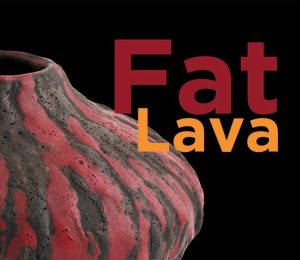Each original Murano Glass item is a unique handmade artwork, with all the Italy Bella Vita in it.
Each piece is unique, this mean it can not be produced industrially, each object can not be identical to an other one. Look at some small differences from the others. If you have a sensible eye you can recognize them, or ask the seller to show you. Look at the colours vividness: few Murano Glass items are transparent, usually they are colored, bright colored. Look at the natural imperfections of the glass, and you will discover the hidden hand of the master.
This is really emotional, and true. Sometimes the craftsman need to use a mold, but you will see that each final product has some difference that makes it unique. It depends for example from the mix of colored glass the master uses for each item.
Murano glass – shown below is our current range of vases, bowls and other decorative vintage collectable Italian glassware from the region of Murano, Venice, Italy. Please choose a sub category below to browse all glassware of that type
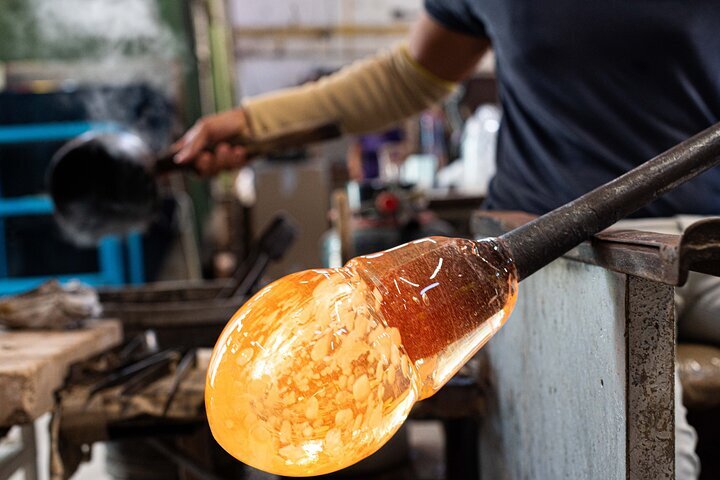
- Arte Nuova
- Aureliano Toso
- AVEM
- Barbini
- Barovier & Toso
- Bucella Cristalli
- Carlo Moretti
- Cenedese
- Cristallo Venezia CCC
- Ferro & Lazzarini
- Ferro Italarts
- Fratelli Toso
- Galliano Ferro
- L Nason
- Mandruzzato
- Oball
- Salviati
- Seguso Vetri d'Arte
- V. Nason & C.
- Venini
- Vetro Artistico Veneziano
- Murano Faceted
- Murano Geodes
- Murano Sommerso
- Murano Zanfirico
The Arte Nuova glass factory was founded on the island of Murano, Venice, Italy, in 1954. There is precious little information available about this company, even the factory name is uncertain, but it is possible different names were used at different times. There are three known factory labels. One uses the name “Pustetto & Zanetti Murano”, another uses “Arte Nuova Murano” and the third has both names. Different sources give the closing date as 1965 or 1968. During this time, Arte Nuova become known for their high quality work using the sommerso technique, winning prizes at the 1958 world fair in Brussels. According to online sources, glassmakers and designers involved with the factory include Itamo Pustetto, Licio Zanetti, Mario Fuga, Aldo Fuga, Nino D’Este, and Alessandro Lenarda.
Aureliano Toso founded the company Decorativi Rag Aureliano Toso in 1938. The renowned painter Dino Martens began designing for the company in 1939. His designed are famous for the use of patches of Aventurine, filigree canes, Latticino/Zanfirico, and multicoloured murrine. The most well known designs are probably Dino Martens Oriente range.
Arte Vetraria Muranese, or AVEM (A.Ve.M.) for short, was founded in 1932, by several glassblowers – Antonio Luigi Ferro, his son Egidio Ferro, Emilio Nason, and Galliano Ferro. Giulio Radi was technical director. Some early designs were created by the renowned painter Vittori Zecchin.
AVEM are probably best know today for their very popular and long running Bizantino series, known more commonly by collectors as “tutti-frutti”, a range of ashtrays, bowls and vases that was introduced in 1953 by an unknown designer. The Bizantino range is often wrongly attributed to designer Dino Martens, who never actually worked for AVEM, due to a mistake in a popular book on Murano glass.
Alfredo Barbini began learning the art of glass making in 1912, aged ten, at Abate Zanetti, the design school attached to the Murano Glass museum. He then went on to work for Ferro Toso, Cristalleria Murano, Zecchin-Martinuzzi, Seguso Vetri’dArte and Vetri Artistici Muranesi Societa Anonima. In 1946 he became a partner at Cenedese, and then began Barbini Glassworks in 1950. Some financial assistance for setting up the factory was provided by Salviati. In exchange, Barbini supplied Salviati with some of the glassware they produced. This explains why some known Barbini designs can be found with Salviati labels. Barbini has become renowned for his heavy, thick sculptural forms which have won him many awards. In 1952 Alfredo’s daugher Oceania Barbini-Moretti joined the glassworks and became the company’s sales manager. His son Flavio became a designer for the firm in 1968.
Barovier & Toso was formed in 1936 with the merge of two glasshouses – Vetreria Artistica Barovier, and Ferro Toso. the company was first known as Ferro Toso Vetrerie Artistiche Riunite S.A. up until 1942, and then Barovier & Toso. Chief designer Ercole Barovier created many well known designs, including Crepuscolo, Brillantati, Zebrati, Acanto, and of course the popular ribbed design Cordonato d’Oro, usually made in red glass with gold leaf inclusions. The company still exists today.
Bucella Cristalli is a retailer on the island of Murano, Venice, Italy, that also had or has a grinding and polishing facility, which was supplied by “rough” pieces from other Murano furnaces. There is conflicting information on whether or not they at one time also had their own furnace. One reliable source says they did, another says they did not. The company is owned by Renzo Bucella. He had a partner in the business named Giovanni Battista Fort, until they went separate ways at around 1982-84. We are not sure what year the company was founded. When the Consorzio Venezia Vetro was established as a method of guaranteeing and promoting authentic Murano glass, Bucella Cristalli was assigned the Vetri Murano (VM) number code “019”.
Known suppliers: Murano factories that are known to have supplied / been sold by Bucella Cristalli include – Oball, De Biasi, and Studio Cimaro.
Carlo Moretti founded his own company in 1958, and was later joined by Giovanni Moretti, his brother. Carlo Moretti produced colourful designs in a marbled pattern, as well as a range of vases and bowls with a matt finish known as Satinato. The same range can also be found in a glossy finish. Later they began production of drink ware glasses, along with more decorative vases. the company is still active today.
In 1946, Gino Cenedese formed the company Cenedese & Co. In 1947 he was joined by Alfredo Barbini as a partner, who was also artistic director and master glassblower. After Barbini left in 1950 to start his own company, Cenedese began using freelance designers, which included Fulvio Bianconi, Riccardo Licata, and Napoleone Martinuzzi. Antonio Da Ros became artistic director in 1959. He frequently designed pieces using the Sommerso technique, often with ‘Uranium’ green glass that glows brightly in ultra violet light. Cenedese are probably best known for their range of Aquarium sculptures – large clear blocks of glass filled with suspended fish and seaweed. they were originally designed by Alfredo Barbini, and later continued by Riccardo Licata.
There is precious little information available about the Cristallo Venezia CCC glassworks. There are just a handful of labelled examples that can be found online. The gold and silver foil label reads “Cristallo Venezia”, with a rectangular banner across the bottom that reads “C C C”. An identical label has also been found that reads “Artistica Murano, C C C”, indicating a factory name change to or from Artistica Murano CCC at some point. Of the few online labelled examples, production seems to be mainly sculptural bowls made in the sommerso technique. Common characteristics include a distinctive star shaped base, hot worked curled and cut out “maple leaf” shaped rim, and colours that fade from dark to pale or clear.
The Ferro Eugenio & Co glass factory was founded on the island of Murano, Venice, Italy, on 18th August 1929, by Eugenio Ferro in partnership with Giovanni Lazzarini. After Eugenio died in 1947, the factory was managed by his young heirs. During this time, Giovanni Lazzarini became more involved, and the company name was changed to Ferro & Lazzarini SRL. Since 2001, the factory is run by Dario Ferro, a direct descendant of Eugenio Ferro. Master glassblowers at Ferro & Lazzarini include Francesco Ragazzi, Marino Santi and Amedeo Rossetto.
The small amount of information I have been able to find online about Ferro Italarts (founded by Giulio and Luciano Ferro after leaving AVEM), has turned out to be incorrect, as according to the AVEM book, Luciano died in 1972 while still working at AVEM, and Giulio left AVEM in 1976 to form L’Anfora. I haven’t been able to find out any more information about this company, but it seems likely they may have been a shop / retailer rather than a factory. Some of the glassware found with Ferro Italarts labels closely resemble work by the Galliano Ferro factory.
Fratelli Toso was created in 1854 by six brothers – Angelo Toso, Giovanni Toso, Ferdinando Toso, Carlo Toso, Gregorio Toso and Liberato Toso. They were joined by Ermanno Toso in 1924 who became artistic director. The Fratelli Toso company is well known for its use of colourful murrine and millefiori during the 1950’s and earlier.
Galliano Ferro formed his own glass factory in 1955 after leaving Arte Vetraria Muranese, or AVEM (A.Ve.M.), which he co-founded in 1932. Designers at Galliano Ferro include his son Giorgio Ferro, Ezio Rizzetto, Fulvio Bianconi and Vinicio Vianello. Giorgio Ferro became head of the company in 1972. British importers Jaffe Rose are known to have imported some of their work, applying their own “Jaffe Rose, Murano Glass” import labels.
It is unclear for now if L Nason was a glass factory, brand, or retailer/shop. There was a factory named Lino Nason in existence during the 1930’s – 40’s, but much of the glass found with these labels seems to have been made later, and I couldn’t find any information about when the factory closed. It is also mentioned online that the name/brand Lino Nason was used by Ermanno Nason, in collaboration with artist Lino Perone, during the 1970’s / 80’s [link]. However, based on the type of glass that has been found with this label, some including myself now believe that L Nason was most likely a retailer, that sold glass made by several Murano factories. By gatherning as many labelled examples as we can find here, it is hoped that we can solve this mystery. If anyone has a piece of Murano glass that bares this L Nason label
Mandruzzato™ was founded in 1934 on the island of Murano, Venice, Italy, by Benjamin Mandruzzato. After Benjamin died in 1954, the factory was run by his son Luigi Mandruzzato. In 1965 Luigi was joined by his son, Gianfranco Mandruzzato, who took over the running of the company two years later. At first the company made glass lighting fixtures, and then began producing ornaments, vases, ashtrays, and other art glass. Mandruzzato is probably best known for their geometric shaped vases and bowls, inspired by earlier work by Luigi and Gianfranco in collaboration with Pablo Picasso. The firm is now run by Gianfranco’s son Alessandro Mandruzzato and became fully trademarked in 2011.
Vetreria Artistica Oball was founded in 1978 on the island of Murano, Venice, Italy, by Luigi Onesto, who had previously worked at Gambaro & Poggi since the age of 15. Luigi was later joined at the Oball factory by his sons, Fabio Onesto and Michele Onesto. Oball are best known for their very impressive, multi layered sommerso vases, bottles and other objects. The Oball factory identification code for the “Vetro Artistico Murano” certification is 004.
Salviati & Co was founded in 1859 in Murano, Venice, Italy, by Dr Antonio Salviati, Enrico Podio, and Lorenzo Radi. In 1883 it was purchased by the Barovier family, but continued under the name Salviati & Co. After Antonio Salviati died in 1890, the company was run by Amalia Salviati Ivanich, and Salviati’s two children, Giulio Salviati and Silvio Salviati. Following Silvio’s death in 1920, the company was run by Maurizio Camerino and his two sons Mario Camerino and Renzo Camerino. Dino Martens designed for Salviati between 1932 – 1935. Other designers include Luciano Gaspari, Romano Chirivi, Renzo Camerino and Sergio Asti.
Seguso Vetri d’Arte, originally named Artistica Soffiera e Vetreria – Barovier Seguso & Ferro, was formed in 1933 by Antonio Seguso and his sons Archimede and Ernesto, Luigi “Olimpio” Ferro, and Napoleone Barovier. Archimede Seguso was the master glassblower. Alberto Seguso, an accountant, joined as a partner in 1934. Flavio Poli also joined in 1934, as artistic director, and became a partner in the company when Luigi Ferro left in 1937. At this time, the name was changed to Seguso Vetri d’Arte s.n.c In 1939, the factory merged with Ing. Francesco Zecchin – Vetri Artistici e Mosaici, a company they had previously collaborated with, and Francesco Zecchin became a partner of SVA. Francesco left in 1940, when he was called to serve in the war, and Alberto Seguso left in the same year. Archimede Seguso left in 1942 due to ill health. Three new master glassblowers joined as partners in 1945: Francesco Martinuzzi, Guido Seguso and Giusto Nichetto. In 1946, as production increased, three more glassblowers joined as partners: Plinio Pustetto, Umberto D’Este and Angelo Seguso. Due to increasing taxes for limited partnerships, in 1949 the company was liquidated, and at this time Francesco Martinuzzi and Guido Seguso left to found Seguso dalla Venezia. The remaining partners then founded a new company, Seguso Vetri s.r.l, changing to Seguso s.r.l in the same year. Napoleone Barovier retired in 1950. This was the year Flavio Poli began to experiment with the sommerso technique, for which he became most famous. Mario Pinzoni joined the factory in 1953, as assistant to Flavio Poli. Plinio Pustetto left in 1958 due to health problems. In 1959 the factory name was changed to Seguso Vetri d’Arte s.a.s di Ernesto Seguso, Flavio Poli & C.i. Flavio Poli and Ernesto Seguso both left the company in 1963, and Angelo’s sister Angela Seguso joined as a partner. At this time the name was changed to Seguso Vetri d’Arte s.a.s di Bruno e Angelo Seguso & C.i, and Mario Pinzoni replaced Flavio Poli as artistic director. Angela Seguso left in 1967, and Bruno Seguso in 1969. The name was then changed to Seguso Vetri d’Arte s.a.s di Angelo Seguso & C. Mario Pinzoni left in 1971, and was replaced by Vittorio Righattieri. Production ceased in 1973 and the company was put into liquidation. Ownership of the brand name changed several times over the next few decades, until being returned to the Seguso family. Giampaolo Seguso, son of Archimede Seguso, founded Seguso Viro in 1993, with his sons Gianluca, Pierpaolo and GianAndrea. In 2009, they aquired the brand name Seguso Vetri d’Arte from the owner at that time, Amelio Cenedese.
Vincenzo Nason established his glassworks, Vincenzo Nason & Cie (VNC) on the island of Murano, Venice, Italy in 1967, after having previously worked at Venini. At some point they traded under the name Veritable Opaline de Murano, before the name was finally changed to V. Nason & C. in 1989. The company is believed to have closed sometime around 2001. V Nason & C are probably best known for their ‘Avventurina’ range, black glass filled with copper aventurine inclusions. They also produced many sculptures of animals and birds, as well as opaline glass which often bore labels reading ‘Veritable Opaline de Murano’ or ‘Veritable Opaline de Venise’, both labels included a red wax seal style ‘N’ for Nason.
The Venini glass works was started in 1921 by Paolo Venini, Giacomo Cappellin, and Andrea Rioda. The company was named Vetri Soffiati Muranesi Venini Cappellin & C in 1924, and the painter Vittorio Zecchin became artistic director. Cappellin left in 1925 to create his own company, and Venini created a new company called Vetri Soffiati Muranesi Venini & C, with Napoleone Martinuzzi as artistic director until he left in 1932. Designer Carlo Scarpa joined in 1932, and became artistic director in 1933. Other designers who worked for Venini include Fulvio Bianconi, Riccardo Licata, and Tobia Scarpa.
The glassware shown in this section is often found with foil labels which read “Hand Made Genuine Venetian Glass, Made in Murano Italy, Vetro Artistico Veneziano”. There is not currently much information available on Vetro Artistico Veneziano. They appear to have been a retailer or exporter / distributor.
Faceted “block” vases and bowls similar to the ones shown below have been popular since the 1950’s, and production has continued right up to today. There have been many factories in the Murano region which have made glassware in this style, and as such it is difficult to be certain of the manufacturer without labels or signatures present. Companies that have produced glassware in this faceted style include Mandruzzato, Campanella, V. Nason, Formia, Bucella Cristalli (retailer, & grinder / polisher of supplied “rough” pieces), Moleria 83, Pagnin & Bon, Tiozzo & Ferro, Gianni Seguso, Oball, and Cesare Toso (probably a retailer). Several different labels found on this style of glass include the words “Vetri Molati”, which is Italian for “ground glass”, a reference to the grinding process used to create this style. The vast majority of these faceted Murano glass items contain two or more suspended coloured layers of glass in a third layer of clear glass, using the very popular sommerso technique.
Important note: As with most sommerso glassware, it is very common to find these wrongly attributed to Flavio Poli, a designer who became famous for his sommerso designs. However, Flavio Poli worked for the Seguso Vetri d’Arte factory, whose designs are very well documented, and there are no records at all of them ever producing these faceted sommerso items. Sadly this does not stop inexperienced sellers from copying the incorrect Flavio Poli attribution.
Murano glass Geode bowls earn the name “geodes” due to their resemblance to geode rocks – rocks or stones that have been sliced neatly in two. The geode bowls therefore have a perfectly flat, wide rim. Murano glass geodes consist of two or more layers of cased glass. They were made my several Italian glass manufacturers from the Venetian island of Murano, and as such it is virtually impossible to identify the maker of an unmarked bowl. Popular geode shapes include circular, square, triangular, figure eight, and kidney shaped among others.
The sommerso technique was originally developed in the 1930’s by Carlo Scarpa at Venini & Co. Sommerso (Italian for “submerged”) is the Murano glassmaking technique of creating two or more layers of contrasting glass without the colours mixing together. It is formed by dipping coloured glass into molten glass of a different colour, before blowing the glass into the required form. The outermist layer is often clear. During the 1950’s the sommerso style became world famous due to the work of Flavio Poli, artistic director of Seguso Vetri d’Arte. There have since been many other factories in the Murano region which have made pieces in this style, and as such it is difficult to be certain of the manufacturer without labels or signatures present. Other well known manufacturers that have produced glassware in the sommerso style include Mandruzzato, Galliano Ferro, Formia, Oball, and Arte Nuova.
Zanfirico is a technique invented by glass makers on the Venetian island of Murano, Italy. Zanfirico glass consists of fine filigree canes which have been stretched and twisted to form beautiful lattice patterns. The name Zanfirico derives from the surname of a 19th century Italian art dealer, Antonio Sanquirico, however the Zanfirico technique has been used as far back as the 16th century, when it was originally known as ‘Filigrana a Retortoli’. Many Murano glass manufacturers use Zanfirico canes in their glassware production, including Venini, Aureliano Toso, Fratelli Toso, and AVeM.
Bitossi
In 1921, Guido Bitossi established the “Maioliche artistiche Guido Bitossi” factory, focusing on a production style rooted in tradition and classical design, while simultaneously pushing boundaries through research and innovation in ceramics.
From the early 1950s, the company’s transformation took a modern turn under the artistic leadership of Aldo Londi (1911-2003), a visionary with an innate sense of creativity and aesthetics. Londi had a sharp eye for evolving trends and a deep understanding of the distinctive qualities of Italian craftsmanship.
Londi joined Bitossi in 1946, where he became the central figure for over five decades—starting as a painter, later as artistic director, and ultimately as a tireless innovator, continuously exploring new styles and sources of inspiration.
Bitossi Designers : A descendant from a long, long line of Tuscan ceramic manufacturers, Guido Bitossi established his own ceramic craft works near Florence, in Montelupo, in 1921. Originally named Manifattura Ceramica Cav. Guido Bitossi & Figli (Ceramaic Manufactory Guido Bitossi & Sons), the company name was later shortened to Bitossi Ceramiche.
Renowned Italian ceramist Aldo Londi crafted a diverse range of decorative ceramics in the latter half of the 20th century for the celebrated manufacturer Bitossi. While Londi is best known for his small-scale animal sculptures, his work for Bitossi extended to vases, bowls, and desk accessories. Vintage Aldo Londi pottery is highly prized by collectors, distinguished by its meticulous attention to detail and the rich, captivating colors evocative of the Mediterranean.
Born in Montelupo Fiorentino, near Florence—a region with a long tradition of ceramics since the Renaissance—Londi developed an early passion for the craft. At just 11 years old, he began apprenticing at the Fratelli Fanciullacci ceramic workshop, where he worked until he left to serve in World War II. After returning in 1946, Londi took on the role of creative director at Bitossi, a position he held for more than five decades.
Londi’s innovative style brought new life to Bitossi, where he focused on producing high-quality, handmade decorative pieces. Many of the company’s most iconic pottery collections were designed by Londi himself, including the legendary Rimini Blu line of animals and vases, which debuted in 1955. Characterized by bold geometric patterns and whimsical designs, Rimini Blu is instantly recognizable for its striking blue glaze.
Londi’s international acclaim grew, particularly with the support of Raymor, an American import and distribution company. Raymor introduced Bitossi and other renowned Italian manufacturers to the U.S. market, making their pieces available in boutiques and department stores across the country. Raymor founder Irving Richards, who had hired Ettore Sottsass to design ceramics for the company, introduced Sottsass to Londi. Decades before founding the iconic Memphis Group, Sottsass used the Bitossi kilns to produce works that blended primitive forms with modern geometries, further elevating Londi’s influence.
In 2021, Bitossi established the Bitossi Archive Museum at its headquarters in Montelupo Fiorentino, showcasing many of Londi’s most significant designs and honoring his legacy as one of the company’s most esteemed contributors.
Few companies had their finger on the pulse of American furniture like Raymor, the influential importer and distributor. Founded by Irving Richards, Raymor’s success story began after Richards attended the 1928 Salon d’Automne art and design fair in Paris, where he was introduced to the world of furniture design. In 1930, he joined the lighting company Lightolier, where he developed important business relationships, including one with designer Russel Wright.
Richards and Wright met in 1935, and in 1936, they formed Russel Wright, Inc. Their collaboration led to the highly successful American Modern ceramic tableware line, launched in 1938 under the name Wright Accessories. Following the line’s success, Richards acquired a majority stake in Wright Accessories and renamed it Raymor Mfg Division Inc. in 1941.
By 1952, the exclusive rights to American Modern expired, as the line had been produced by Wright Associates and later manufactured by Steubenville for two decades. To stay ahead of American market trends, Raymor began collaborating with prominent designers such as George Nelson, Arthur Umanoff, Ray and Charles Eames, and Hans J. Wegner.
Raymor also expanded its imports, notably bringing Scandinavian modern designs to the U.S. Through relationships with factories in Denmark, Italy, and Germany, as well as with tastemaker and importer Charles Stendig, Raymor helped shape the American design landscape in the 1950s.
In 1963, the furniture giant Simmons acquired Raymor, and in 1969, the company was renamed Raymor Richards, Morgenthau Inc. During this period, Raymor’s Scandinavian-style Omnibus wall units became hugely popular, alongside Italian glass and pottery, including Bitossi ceramics designed by Aldo Londi and Bagni ceramics by Alvino Bagni.
However, shifting design trends, increased competition, and Richards’ departure from the company eventually led to Raymor’s decline. By the late 1970s, cheaper, lower-quality alternatives from international factories flooded the market, while consumer demand for high-end, durable furniture—like Raymor’s imported pieces—began to wane. As buyers embraced fast-changing interior styles, Raymor’s once-dominant position faded, marking the end of an era for the company.

Sklarna Chřibská (Czechoslovakia)
The Chřibská glassworks, officially known as Sklarna Chřibská, was founded in 1414 in the town of Chřibská, originally part of Bohemia and later part of Czechoslovakia. It became one of the oldest glass manufacturing companies in Europe, operating for centuries until its closure in the late 2000s.
The Mayer family took over the operation of the glassworks in the late 1800s, maintaining control until World War II. During the war, many factories, including Chřibská, were nationalized, and the glassworks became part of the Borske Sklo National Corporation.
Josef Hospodka, the most renowned designer associated with the company, joined Chřibská in 1958 and became head designer at both Borske Sklo and Chřibská until 1970. Hospodka’s designs, characterized by organic and sculptural forms, became iconic and were so popular that they remained in production long after his departure. His work helped define the company’s identity, and many of his pieces are still considered some of the most recognizable products of Chřibská.
Though Hospodka left the company in the early 1970s, he returned in 1985 as a designer and continued working until his death in 1989.
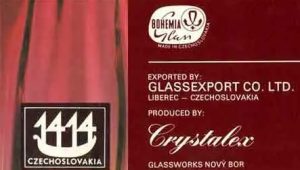
Arabia (Finland)
In 1873, the Swedish company Rörstrand established a factory in Helsinki, Finland, on a site known as Arabia. The move was driven by a strategic interest in the Russian market, with Finland offering easier access and lower import duties.
Production began in 1874, initially focusing on undecorated domestic faience, sanitary items, and large tableware sets adorned with transfer prints made from copper plates.
World War I led to a shift in ownership. In 1916, Rörstrand sold its entire stake to Finnish investors, and with Finland’s independence, Arabia entered a period of rapid growth.
In 1945, Arabia hired Kaj Franck to oversee product design. Despite the challenges of World War II, the company expanded, employing over 2,000 people by 1947. However, rising production costs, inflation, and price controls placed significant financial strain on Arabia. In 1947, Wärtsilä provided financial support, and by the end of the following year, Arabia was fully acquired by the company.
The 1950s marked a significant redesign of Arabia’s product line, largely thanks to Kaj Franck’s influence. Designers such as Gunvor Olin-Grönqvist, Liisa Hallamaa, and Brita Heilimo joined the Industrial Art Department, while Oiva Toikka, Francesca, and Richard Lindh worked in the Art Department.
In the 1960s, Ulla Procopé introduced iconic collections such as ‘Valencia’ and ‘Ruska,’ and Birger Kaipiainen’s beloved ‘Paratiisi’ series debuted in 1969.
Today, after 150 years, Arabia continues to operate as a leading name in ceramics.

Whitefriars (England)
In 1923, James Powell and Sons, which would later become Whitefriars Glass Limited, established a factory on Tudor Road in Wealdstone, Harrow. This move came after relocating from a cramped and polluted corner of the City of London, where the company had been based since 1680.
The original Whitefriars site was strategically located near the River Thames, allowing for easy transport of raw materials like sand, clay, and coal, which were essential to the glassmaking process. The site had once been home to a Carmelite monastery, founded in 1241. The monks, known for their white habits, were dubbed ‘White Friars,’ a name that would later be adopted by the glassworks.
In 1962, the company was officially renamed Whitefriars Glass Limited, and in 1963, it introduced its now-iconic logo of a stylised friar. This design paid homage to the original location of the glassworks in the City of London. After 300 years of glassmaking and 57 years in Wealdstone, the Whitefriars Glass Factory closed its doors for the final time in October 1980.
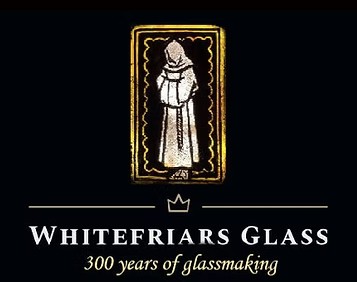
Holmegaard (Denmark)
With a rich and storied history of glassmaking dating back to 1825, Holmegaard stands as a Danish design icon and one of the most renowned names in Scandinavian craftsmanship.
Holmegaard’s legacy goes beyond just a tradition of exceptional quality. The brand is deeply rooted in the vision of an extraordinary woman, Countess Henriette Danneskiold-Samsøe. Not only did she carry on her late husband’s dream of establishing a glassworks near the Holmegaard Marsh, but she also shaped it into a creative and artistic powerhouse. Her forward-thinking approach continues to influence the brand’s relevance and timeless appeal today.
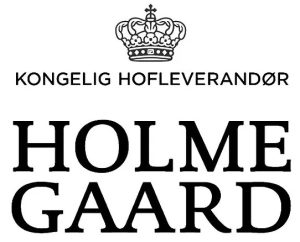
Hornsea Pottery (England)
Hornsea Pottery was established in 1949 by brothers Colin and Desmond Rawson. Initially focused on creating seaside souvenirs, the brand rapidly evolved into the largest studio pottery in the world, employing over 700 people. Its success was driven by innovative designs and a wide range of influences, propelling it beyond traditional ceramics to become a household name.
Located outside the traditional ceramics heartland of Staffordshire, Hornsea developed distinct and pioneering techniques, many of which drew on the Rawsons’ background in textiles. This combination of innovation and craftsmanship allowed Hornsea to set new trends in the pottery world.
The Hornsea story is one of exceptional British design, marked by collaborations with some of the country’s most iconic ceramic and pattern designers. The brand remains highly regarded, with a timeless appeal that endures to this day.
Signature designs such as Heirloom (in brown, green, and blue), Saffron, and Bronte became iconic in British kitchens. Heirloom was produced from 1966 to 1989, Saffron from 1970 to 1990, and Bronte from 1972 to 1987.
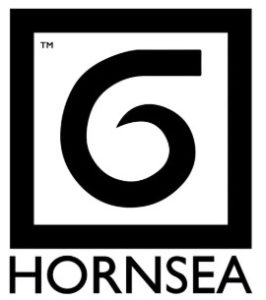
Alsterfors (Sweden)
Alsterfors originally operated as an iron foundry but began producing glass in 1885 after being acquired by J. A. Gottwald Fogelberg, a former manager at Kosta.
The company became a member of the Association of Swedish Crystal Manufacturers in 1903, though it changed ownership several times throughout its history. Renowned designers who worked at Alsterfors include Edvin Ollers (1930-34), Ingrid Atterberg (1958-64), Fabian Lundkvist, and, notably, Per Olof Ström (1968-72).
Alsterfors ceased production in 1980.
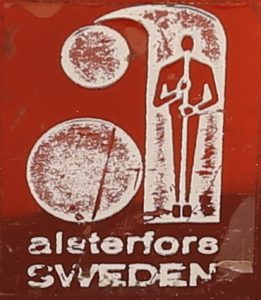
West German Art Pottery Fat Lava
Fat lava is the name given to certain styles of postwar, West German art pottery, particularly from the 1960s and ’70s. The genre gets its name from the thick, encrusted glazes that typify many of these pieces, some of which look as if their surfaces are composed of frozen flows of lava in radioactive hues ranging from fiery reds to cobalt blues. While the glazes were referred to at the time as lava glazes, the “fat” designation is more recent, the result of the public’s particular fascination with pieces whose glazes are especially thick and textured.
Fat lava objects include large floor vases, smaller straight-sided jugs (some with ring handles near their mouths), and sculptural pieces that appear to have been chiseled and sliced, creating juxtapositions of smooth and gnarled surfaces. Some fat lava pieces seem to be outgrowths of the macrame-and-raku aesthetic of 1960s hippie culture, while others have a postmodern, almost pop-culture look to them, sporting deliberately childlike designs like flowers, some rendered in deep relief.
The most prolific fat lava ceramics factories of the period include Bay, Carstens, Jasba, Spara, Scheurich, and Ubelacker. Other well-regarded makers were Jopeko, Klein, Otto, Roth, and Ruscha.
